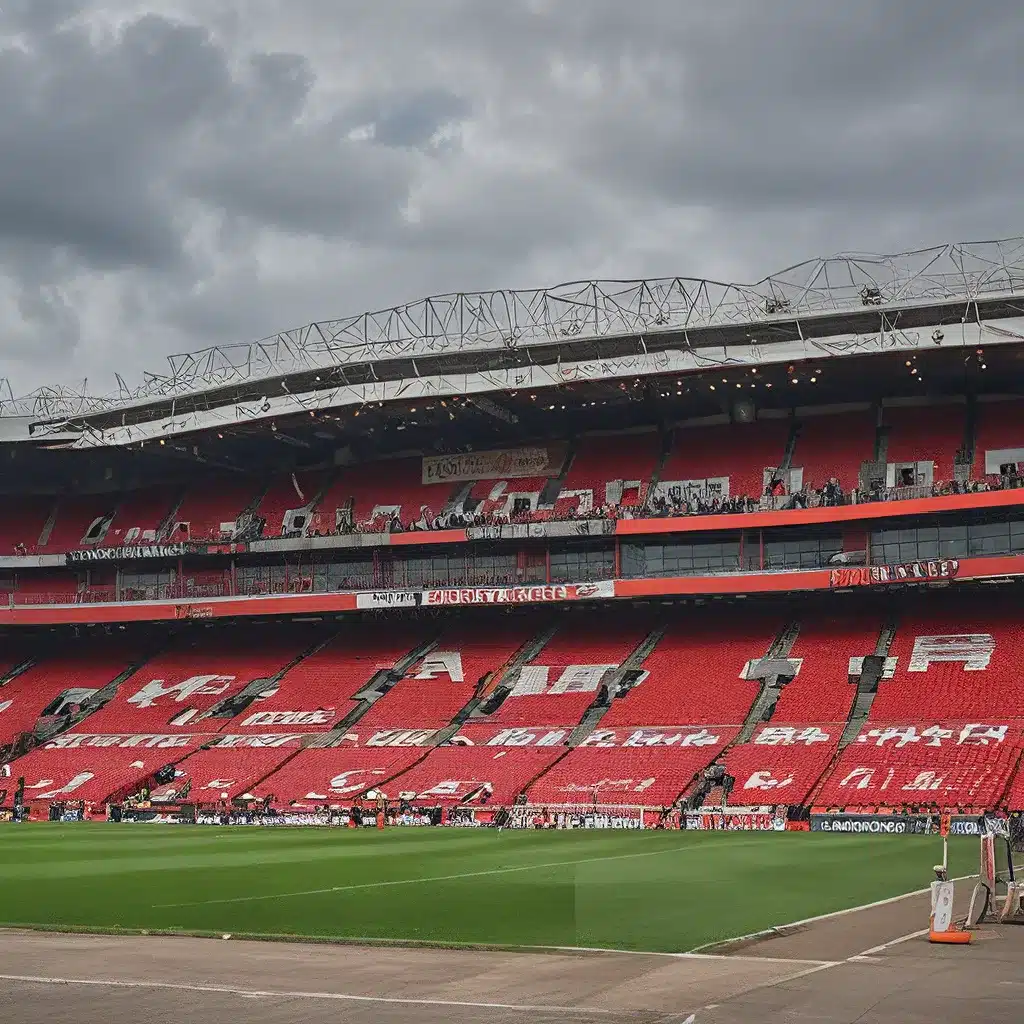
The Storied History of Manchester United’s Iconic Stadium
Old Trafford, nicknamed the “Theatre of Dreams” by the legendary Sir Bobby Charlton, has been the home ground of Manchester United since 1910. Located in the Old Trafford area of Greater Manchester, England, this iconic stadium is not only the largest club football stadium in the United Kingdom, but also the twelfth-largest in Europe, with a current capacity of 74,140.
The story of Old Trafford is deeply intertwined with the history of Manchester United, one of the most successful and recognizable football clubs in the world. The stadium’s construction was spearheaded in 1909 by the club’s chairman, John Henry Davies, who sought to build a new home for the team after their previous grounds were deemed unfit. Designed by the renowned Scottish architect Archibald Leitch, the original stadium was envisioned to hold an impressive 100,000 spectators, though the capacity was eventually reduced to around 80,000 due to cost concerns.
The inaugural match at Old Trafford took place on February 19, 1910, when Manchester United played host to Liverpool. Though the home side was unable to secure a victory on that historic day, the stadium quickly earned acclaim as “the most handsomest, the most spacious and the most remarkable arena” that a journalist had ever seen.
A Storied Venue for Football and Beyond
Over the course of its illustrious history, Old Trafford has played host to a wide array of major sporting events and cultural occasions. Prior to the construction of Wembley Stadium in 1923, the stadium frequently served as a venue for the FA Cup Final, including the 1911 and 1915 editions. It has also been the site of numerous England national team fixtures, as well as matches during the 1966 FIFA World Cup, UEFA Euro 1996, and the 2012 Summer Olympics.
Beyond football, Old Trafford has also played host to significant events in other sports. The stadium has been the regular venue for the Rugby Football League’s annual Super League Grand Final since 1987, and has also been a host venue for several Rugby League World Cup editions. In the realm of rugby union, the stadium has played host to international matches between England and New Zealand, as well as other high-profile events.
The Stadium’s Tumultuous Journey
The rich history of Old Trafford has not been without its trials and tribulations. During the Second World War, the stadium was requisitioned by the military and suffered significant damage from German bombing raids, forcing Manchester United to play their home games at the nearby Maine Road stadium for nearly a decade.
The post-war reconstruction of Old Trafford was a slow and arduous process, with the club facing financial difficulties and a lack of government support. It was not until 1949 that the stadium was able to reopen, albeit without any roofing or cover for the stands. The gradual restoration of the stadium’s facilities and expansion of its capacity continued throughout the 1950s and 1960s, including the addition of floodlighting and the replacement of the outdated roofing pillars.
Modernization and Expansion
The 1980s and 1990s saw a series of significant renovations and expansions at Old Trafford, driven by both the need to modernize the stadium and the club’s growing popularity and success. The Taylor Report in the aftermath of the Hillsborough disaster mandated that all First and Second Division stadia be converted to all-seater facilities, leading to a dramatic reduction in Old Trafford’s capacity.
However, the club’s resurgence under the management of Sir Alex Ferguson in the early 1990s prompted further development. The construction of a new North Stand in 1996, followed by the addition of second tiers to the East and West Stands, gradually increased the stadium’s capacity to its current level of over 74,000, making it the largest club football stadium in the United Kingdom.
A Continued Legacy of Excellence
Today, Old Trafford stands as a testament to the enduring legacy of Manchester United and the unwavering dedication of its supporters. The stadium’s iconic status is evidenced by its continued use as a venue for major international tournaments, including the 2022 UEFA Women’s Euro, where it hosted the opening match between England and Austria in front of a record-breaking crowd.
As the club and its supporters look to the future, there are ongoing discussions and plans for further expansions and renovations to Old Trafford, driven by the desire to maintain its position as one of the world’s premier football stadiums. While the logistics of such projects pose unique challenges, the commitment to preserving and enhancing this iconic venue remains steadfast.
Ultimately, Old Trafford stands as a living monument to the enduring passion and success of Manchester United. From its humble beginnings to its current status as a global icon, the “Theatre of Dreams” continues to captivate football enthusiasts worldwide, offering a truly unparalleled experience for all who step foot within its storied walls. For fans and visitors alike, a trip to Old Trafford is a must-do stadium journey that promises to leave a lasting impression.

